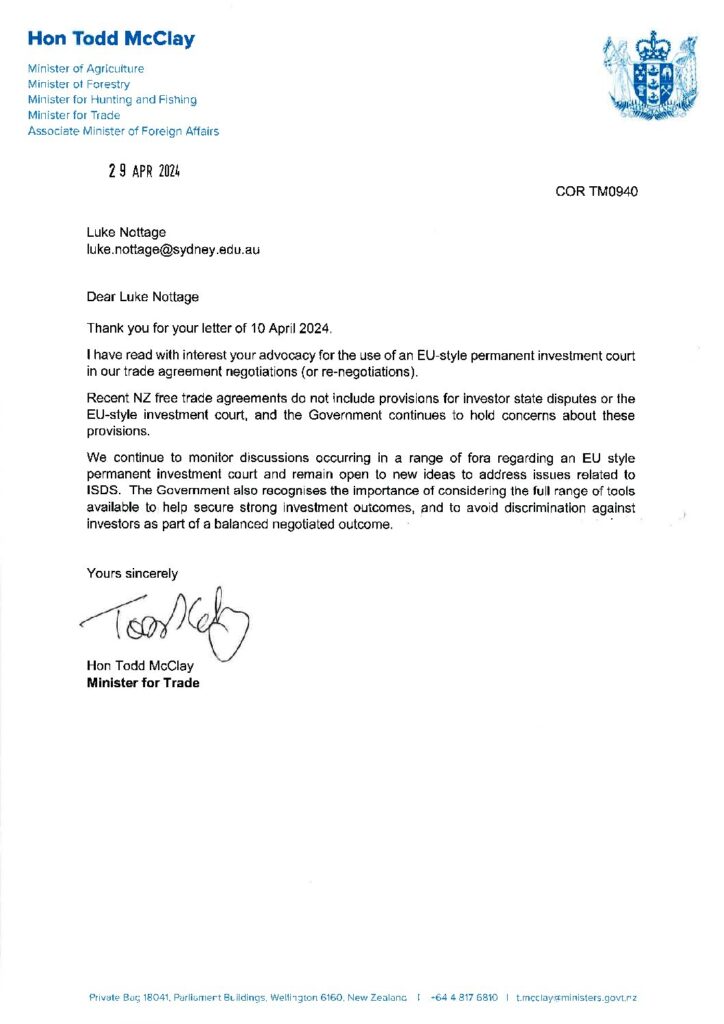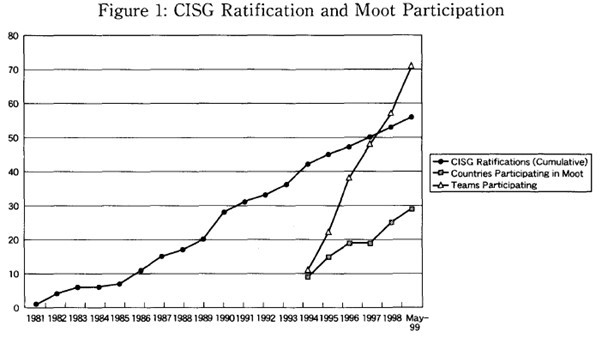Written by: Corinna Chen (CAPLUS research assistant, 2024)
On 1 August 2024, the University of Sydney Law School hosted an insightful seminar jointly presented by its Centre for Asian and Pacific Law (CAPLUS) and the Australian Network for Japanese Law (ANJeL). The event featured the local re-launch of a new book titled Corruption and Illegality in Asian Investment Arbitration (Teramura, Nottage and Jetin eds, published in Open Access in Springer’s Asia in Transition series in April 2024) as well as discussions on the latest research in the field.
Professor Simon Bronitt, immediate past Dean of Sydney Law School with personal research interests in criminal law and Indonesia, opened the session with a brief welcome and address. Assistant Professor Nobumichi Teramura from Universiti Brunei Darussalam – lead co-editor of the new book – then presented an overview of the book’s aims, research questions and key findings (also summarised in a recent piece here and in the East Asia Forum). Professor Luke Nottage from the University of Sydney, also co-editor, complemented this by sharing empirical results from his recent research on corruption-related provisions in international investment agreements (IIAs).
Various other contributing authors also spoke on their areas of focus within the book. These included Professor Vivienne Bath from the University of Sydney discussing China and the Hong Kong SAR, Professor Simon Butt from the University of Sydney and Antony Crockett from Herbert Smith Freehills (Hong Kong) discussing Indonesia, as well as additional commentary from Dr Amokura Kawharu, President of the New Zealand Law Commission. The seminar concluded with closing remarks from the Honourable Wayne Martin AC KC, former Chief Justice of Western Australia, who officiated the book re-launch.
* * *
Despite avid efforts to combat corruption through international treaties and domestic legislation, corruption and illegality in foreign direct investment (FDI) remains prevalent across many Asian countries. Associate Professor Teramura highlighted this as the key motivation behind the project, emphasising the book’s focus on illustrating ‘Asian’ perspectives towards corruption in investment arbitration and exploring the potential for significant Asian states to become ‘rule makers’ rather than ‘rule takers’ in this field (PDF of Powerpoints here).
The research examines the practical impacts of corruption on FDI and local economies in Asia, as well as how illegality in foreign investment projects and disputes have been dealt with across various Asian jurisdictions such as China, Hong Kong, India, Japan, Lao Republic, the Philippines, the Republic of Korea and Thailand. Associate Professor Teramura noted that while some ‘Asian approaches’ are emerging, they are still far from establishing a uniform stance across the region.
The book concludes by proposing a roadmap for developing a more cohesive Asian approach. This includes establishing a regional forum for discussing FDI-related corruption, developing unified rules for handling corruption in investment arbitration, and considering the creation of an independent institution or permanent court to address allegations of corruption in Asian investment disputes.
Following this, Professor Luke Nottage presented compelling insights from his recent paper co-authored with Associate Professor Teramura: “Corruption-related Provisions in East and South Asian Investment Agreements: An Empirical Analysis” (PDF of Powerpoints here). The study revealed a nuanced and often rational approach by Asian countries in negotiating bilateral investment treaties, particularly in their treatment of anti-corruption provisions and legality clauses.
The research found that net FDI-exporting countries like Japan tend to prefer anti-corruption provisions (59%) over direct legality clauses (16%) in their IIAs, aligning with the aim to reduce corruption in investment destinations and protect their outbound investors. Conversely, net FDI-importing countries such as China are more likely to include legality clauses (95%) and almost no anti-corruption provisions, as the former can be invoked to protect their government and domestic taxpayers from inbound ISDS claims. Overall, the empirical analysis found largely rational treaty drafting practices around these two types of provisions across most countries, based on their FDI status.
However, Professor Nottage noted some curious exceptions to this rationality, particularly in the case of Singapore. Despite being virtually corruption free, Singapore rarely includes anti-corruption provisions in its IIAs (only 4%) but retains many legality clauses (61%). This apparent irrationality might be related to Singapore’s outbound FDI often coming from government-linked companies. Such instances of “bounded rationality” or status quo bias provide valuable insights for policymakers and IIA drafters, emphasising the need to consider these complex dynamics when addressing corruption and illegality in international investment frameworks. He concluded with the observation that although most countries appear to be acting rationally with regard to their national interests, such approaches may not be entirely conducive towards addressing the overall prevalence of corruption in the Asian region.
Professor Vivienne Bath then presented insights on China and Hong Kong, based on her chapter with former student Dr Tianqi Gu. In particular, she highlighted several inconsistencies in China’s stance towards eliminating corruption. While China has increasingly sought to tackle these issues through extensive regulations, anti-corruption campaigns and signing the UNCAC, there is a notable lack of transparency with investigations and details of cases, both domestically and in investor-state dispute settlement proceedings. Official Chinese court databases feature very few corruption cases relating to foreign investors or FDIs. Professor Bath also pointed out the absence of legislation addressing corruption by companies and officials outside China, raising this as an important area for future development.
Antony Crockett and Professor Simon Butt spoke on Indonesia, which is infamous for having high levels of corruption across its numerous levels of government. The pervasiveness of corruption in the Indonesian government was illustrated by reference to the three high-profile cases of Churchill / Planet Mining, Al Warraq and Rafat. They noted that judicial corruption dramatically increases the attractiveness of international commercial arbitration, as commercial parties lack confidence in the judiciary and therefore refuse to settle disputes locally. An in-depth analysis of corruption in Indonesian courts can be found in Professor Butt’s recent book, Judicial Dysfunction in Indonesia. This details 30 trials involving allegations of corruption against judges from the supreme court, constitutional court, administrative court, and most disconcertingly, the anti-corruption court itself.
Finally, Dr Amokura Kawharu, who wrote the foreword to the book, briefly discussed the perspective of New Zealand, currently ranked the third least corrupt country in the world. Despite this, New Zealand only ratified the UNCAC and enacted anti-corruption legislation in 2015. This, according to Dr Kawharu, might be explained by the difficulty policymakers face in competing for space on the legislative agenda, an issue compounded by the country’s short 3-year parliamentary terms.
The Hon Wayne Martin AC KC concluded the evening’s discussions with his perspective on the importance of continued efforts to tackle corruption and illegality, which strike at the heart of the rule of law. He added some caution towards the idea of establishing a permanent international court, citing practical challenges such as the inability to attract strong candidates for the bench as well as the customary process of state appointments giving rise to further risks of nepotism.




